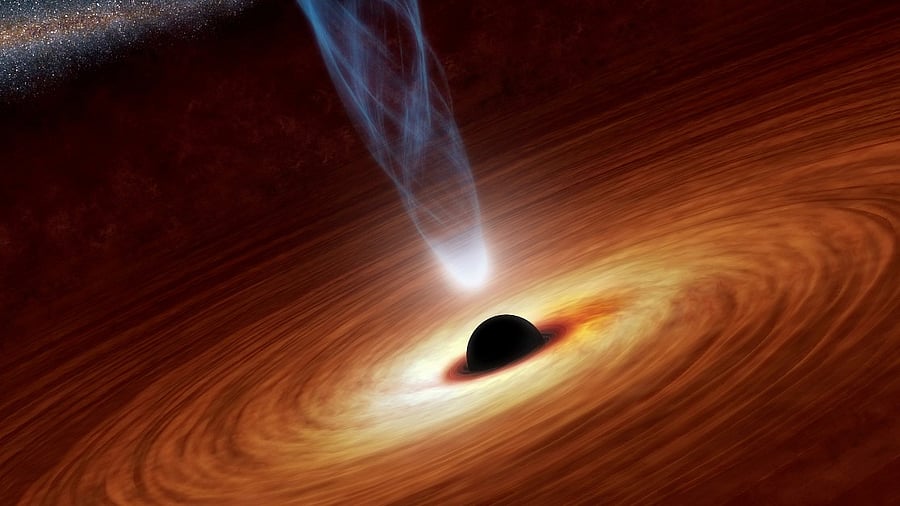
In 2019, astronomers witnessed the signal of a star that got too close to a black hole and was destroyed by the black hole’s gravitational forces. (Representative image)
Credit: Reuters Photo
Bengaluru: New findings by NASA’s space observatories and ISRO’s AstroSat from a stellar wreckage may provide important insights into cosmic occurrences that astronomers call Tidal Disruption Events (TDEs) and Quasi Periodic Eruptions (QPEs).
AstroSat, along with observatories Chandra, HST, NICER, and Swift, found that a massive black hole has torn apart one star and is now using that stellar wreckage to “pummel” another star or smaller black hole. This discovery links two mysteries with a largely unestablished connection, ISRO said on Thursday.
In 2019, astronomers witnessed the signal of a star that got too close to a black hole and was destroyed by the black hole’s gravitational forces. Subsequently, the star’s remains began circling the black hole, in a disk.
Expanding outward over the years, the disk is now directly in the path of a star, or a stellar-mass black hole, orbiting the massive black hole at a previously safe distance. The orbiting star repeatedly crashes through the debris disk, about once every 48 hours, setting off a collision that causes bursts of X-rays that were captured with Chandra.
Matt Nicholl of Queen's University Belfast, United Kingdom, the lead author of the study, equated the collisions to the splashes caused by a diver as she repeatedly goes into a pool. “The star in this comparison is like the diver and the disk is the pool, and each time the star strikes the surface it creates a huge splash of gas and X-rays,” Nicholl said. The paper has been published in Nature.
TDEs are documented as cases where an object gets too close to a black hole and gets torn apart in a single burst of light. Astronomers have also discovered a new class of bright flashes from the centres of galaxies, which are detected only in X-rays and repeat many times. However, they could not explain these X-ray bursts, or QPEs.
“There had been feverish speculation that these phenomena were connected, and now we've discovered the proof that they are,” co-author Dheeraj Pasham of the Massachusetts Institute of Technology said.
Gulab Dewangan, a co-author from the Pune-based Inter-University Centre for Astronomy and Astrophysics, noted that AstroSat's Soft X-ray Telescope and the Ultra-Violet Imaging Telescope both detected the source event, now known as AT2019qiz, but the eruptions were only seen in X-rays. Future sensitive simultaneous X-ray and UV observations of similar eruptions will enable a deeper investigation into their nature.
Andrew Mummery of Oxford University called the findings a “huge breakthrough” in understanding the origin of the eruptions. “We now realise we need to wait a few years for the eruptions to ‘turn on’ after a star has been torn apart because it takes some time for the disk to spread out far enough to encounter another star,” he said.